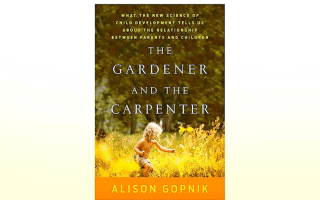There are many paradoxes in child development. And, one of them is “safety first carries greater danger than healthy risk.” Parents are primed to protect their kids at all costs. It’s harder to watch our kids take a fall or scrape a knee than it is to try and prevent those things from happening. However, these minor injuries play an essential role in healthy development. But allowing physical risk is only one aspect of healthy risk-taking. Parents also want to protect their kids from feeling social rejection, being scared or struggling with setbacks. Even so, there’s no amount of shielding that can keep our kids from experiencing these things during their lifetime. And, parents’ overprotection may backfire when we ignore the fact that sometimes kids want to take these risks. This is most apparent when we watch them play. Risk-taking is innate for a reason. But why is healthy risk-taking so important?
Risk-taking is necessary for proper growth and development
Risk has a negative connotation and is presented as something to avoid; however, all children need these experiences. Heather Shumaker, author, free play advocate and a national speaker on early childhood, writes the following in her book, It’s Okay to Go up the Slide. “Kids become safer when they gain experience using their bodies. A child’s body is constantly changing, so kids are keen to experiment with the new model and see what it can do.” Testing their own limits is how kids gain body awareness, conquer fears, develop resiliency and flexibility, “gain dexterity, balance, and strength.” Without this experimentation at a young age and every stage, kids are deprived of opportunities to build their risk assessment skills and gain confidence in their abilities. In their book, Raising Children who Soar, clinical psychologists Susan Davis and Nancy Eppler-Wolff explain it this way. “When young children practice good risk-taking, they are not leaping into the unknown, but building a bridge to avoid possibly devastating risks later on.”
When parents overprotect their kids
Regardless of age, risk avoidance prevents growth, even in adults. Overprotection during their developmental stages, deny kids valuable learning experiences needed to move onto their next stage in life. This lack of bridge-building can result in “impulsive-or bad-risk-taking behavior that emerges without judicious and careful thought, feeling, or action.” When kids are young, the risks are much smaller. As they age, the consequences of a bad decision increase. Without healthy risk-taking practice to build their confidence and judgment skills, risk-taking as a young adult is no longer about “productive growth.” Their impulsive risk-taking “may have self-destructive elements” instead. However, allowing risk-taking shouldn’t be taken to the extreme either.
Not all risks are equal
Schumaker writes, “the key is to separate fear from risk and healthy risk from dangerous risk.” As caregivers, our job is to keep our children safe from serious harm. But it’s also our job to ensure our kids continue to grow, embrace independence, and feel confident in the world. When a young child wants to swing on a rusty, eroded railing, it’s a parent’s job to prevent them from doing so. Because the child is unaware that the rotting may compromise the structural integrity of the railing, and that the resulting injury can be severe.
In addition, appropriate risk changes with age and mastery. And, what feels like a risk to one child, comes naturally to another. An outgoing child may not see approaching a new playmate on the playground as risky, but a shy child would. Risk assessment is individual, but risk-taking is universally necessary for growth. There are 5 key areas to encourage healthy risk-taking.
Physical risk
Where young kids are concerned, allowing healthy physical risk-taking may be the hardest one for adults. Parents often say, “that’s dangerous,” “slow down or you’ll hurt yourself,” “get down from there” and “be careful.” But Schumaker warns, “too much of this message can cause kids to shrink back and avoid all risk, even necessary risks” like “pouring her own milk.”
Early childhood educator Lisa Murphy highlights another critical distinction in taking physical risks in her book, Lisa Murphy on Play: The foundation of Children’s Learning. Safety rules prevent children from climbing up the slide and down the steps, sliding down on their tummies or twisting themselves in swings and then letting go. However, these rules also prevent kids from “learning about balance, motion, pendulums, cause and effect, action and reaction.” In other words, kids are not only learning about themselves; they are also learning physics and about the world around them.
Another critical aspect of physical risk is rough-and-tumble play. Stuart Brown, founder of the National Institute for Play, says the following in his book, Play. “Lack of experience with rough-and-tumble play hampers the normal give-and-take necessary for social mastery, and has been linked to poor control of violent impulses later in life.” Adults often do not make the distinction between play fighting and real aggression. The result is that play wrestling, mock martial arts, sword fighting, and other forms of roughhousing are banned. For kids who need it, Brown believes this type of play “is necessary for the development and maintenance of social awareness, cooperation, fairness, and altruism.” Rough-and-tumble play gives kids practice with unpredictability and trains them to be more mentally and emotionally flexible.
Creative risk
Young children, especially, need the freedom to take creative risks. They need to be able to experiment with their own ideas. They need to be able to use paints, manipulate play dough, tell stories and make-believe in their own way. To encourage this type of risk-taking, adults can refrain from directing play with phrases like “let’s sort the blocks by color.” And avoid saying, “that’s not a weapon, it’s a magic wand,” or “today, we’re going to make a dog out of macaroni.” These statements take away creative freedom and set limits on what they can create. When kids make these decisions, they’re taking creative risks. Adults can play along to support kids’ risk-taking.
Another area where well-meaning adults limit creative risk is in the creation of “artwork.” Adults want a beautiful piece to hang up for display, but for a child, the process is what’s vital about the artwork. Kids like to mix colors to see what happens (even if they get brown every time). Or, they will layer paint on top of wet paint until there’s a hole in the page. And they like to feel the paintbrush as it glides across the page, making blobs instead of a painting of anything specific. These are opportunities for them to take creative risks. They have to make decisions, see the outcome, and problem solve. This process separates art from crafts. While crafting can be enjoyable, it removes the need and chance to take creative risks. The goal is to arrive at a predetermined outcome.
Social risk
Depending on the child, a social risk might be saying hello, looking another person in the eye, or asking a question. Not all kids are ready to take on these risks. But adults need to provide opportunities without forcing them to do these things. For example, allow kids to ask their friends for playdates and make it okay to experience rejection from a playmate. A parent can help normalize the slight by not making a big deal out of it. After all, it’s expected to get a conflict in scheduling every once in a while. Though it’s heart-wrenching for a parent to watch, these temporary hiccups help build resilience and are healthy for kids. When they go through a heartbreak later on, they’ll know it’s just another setback they can overcome.
Emotional risk
Simply put, emotional risk is just the risk of feeling bad. Feelings like sadness, fear, embarrassment and anger don’t feel good, but they also shouldn’t be completely avoided. Allowing children to feel these negative emotions once in a while gives them practice in dealing with and recovering from bad feelings. Davis and Eppler-Wolff write, “Children need to experience failure to know that it won’t destroy them and that they can bounce back from it.”
Intellectual risk
The risk of being wrong is the main component of intellectual risk. Older kids, especially, need to know it’s okay to make mistakes in school and life. Mistakes are just part of the learning process and are necessary for mastery. Perfection is beyond a learner’s capability. And kids may decide not to try at all for fear of failure.
Healthy risk-taking misconceptions
While it’s true that allowing and encouraging healthy risk-taking is important and necessary, people sometimes go in the opposite direction and think permissiveness is okay. It is not. For example, it isn’t appropriate to allow certain risks without proper training first. Some risk-taking needs to happen in steps. One example is letting our kids cut with knives. Young kids should certainly be allowed to handle a knife. But they should start with a butter knife and something that cuts easily, like a peeled banana. And it’s okay for kids to use a hammer and nails, but they should be trained on the proper handling of these tools before getting access to them. Parents are still responsible for safety, but it doesn’t have to be safety first at all costs.
Lastly, parents need to be available to support a child through a failure or rejection after allowing these opportunities. Davis and Eppler-Wolff write, “While all risks represent a challenge of some kind, not all challenges are risky.” Just because a child is going through a hard time doesn’t mean they benefit from the experience either. For example, it’s healthy for a child to experience rejection from peers occasionally. However, it can be traumatic for them to experience rejection repeatedly. Parents will need to intervene to keep the child from internalizing feelings of failure and keep the experience a healthy one.
Read more posts about Child Development where we share the latest research to help you meet your child at each age and stage.
When you buy something through our affiliate links, we may earn a small commission. This does not affect the price you pay and helps us cover the cost of running this site. Listed prices may change after publication. See full policy.








